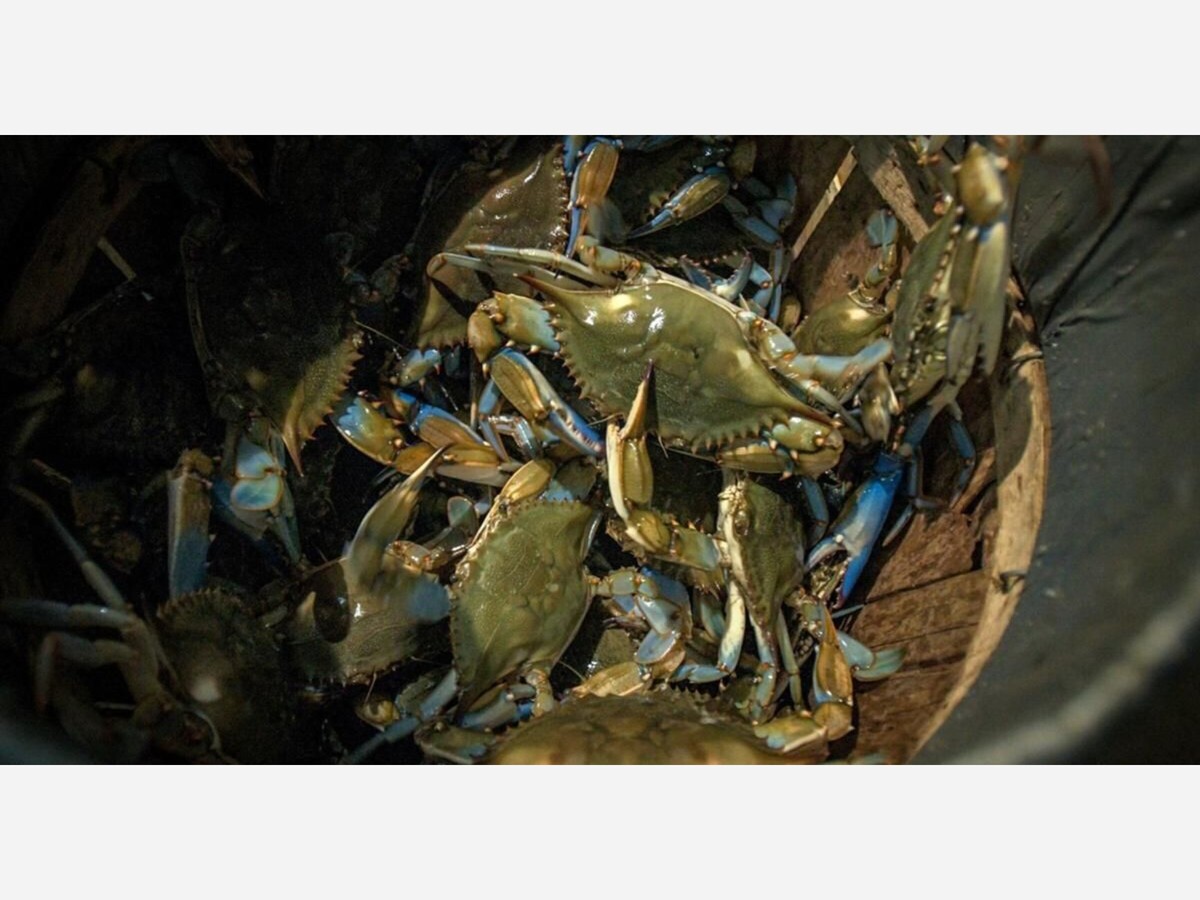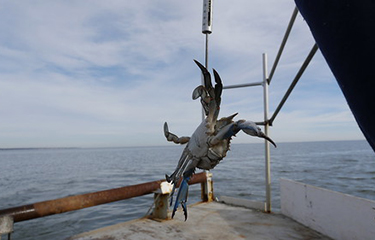Image

Promising jump in blue crab numbers recorded in Chesapeake BayBy:
National Fisherman

A winter survey has shown a promising increase in the blue crab population in the Chesapeake Bay, in the U.S. Mid-Atlantic.
The population rose from 227 million in 2022 to 323 million blue crab in the Bay in 2023, up by 96 million individuals, the survey found. The Virginia Marine Resources Commission (VMRC) and Maryland’s Department of Natural Resources (DNR), which jointly conducted the survey, said 2022 was the worst result they had recorded in the 34 years of the survey, and was down significantly from the all-time high of 852 million crabs reported in 1993.
The low survey numbers resulted in the VMRC and DNR to place limits on crabbers – cutting down the days they could work and instituting catch limits. The restrictions led to a record low catch in 2022.
Crabbers are also reporting early signs of population improvement this spring. They are regularly reporting that they are catching the full 27-bushel daily limit – the reduced limit that was imposed last year, according to both agencies.
Cape Charles, Virginia-based crabber Kenny Heath said he caught his limit on 14 April in a little over a half-day, fishing 250 pots in the Chesapeake Bay.
“We have been catching our limit regularly, and we are encouraged by the number of crabs we are seeing at the start of the season,” he said.
There has been some concern, however, on Virginia’s western shore, as to the slow start of the peeler and soft-shell crab fishery.
“We have had a cooler than normal spring, and the inconsistency in weather has led to inconsistency in crabs,” Lee Walton, a crabber from Urbanna, Virginia, said.
As a result of the positive numbers, a state committee on crab management is recommending increases to crab catch limits in fall and next spring – but is keeping in place the summer reductions, the Virginia Mercury reported.
Since 1990, the survey has utilized traditional crab dredges to sample blue crabs at 1,500 sites throughout the Chesapeake Bay from December through March. By sampling during winter, when blue crabs are sedentary and buried in the mud, scientists can develop more precise estimates of the number of crabs in the Bay.
While the numbers were positive, the report states that although the spawning stock has returned to healthy levels, fisheries managers should remain cautious about the continued trend of low juvenile abundance.
The juvenile populations from 2021 through 2023 rank amongst the six lowest years in the 34 years of the survey. The 2023 adult female abundance of 152 million crabs, however, is promising, though it remains below the target abundance of 196 million crabs, they said.
“We're pleased to see over a 50 percent increase in the adult female numbers in 2023,” VMRC Commissioner Jamie Green said. “These results are encouraging, and we’ll continue working diligently with our partners in the Chesapeake Bay to increase blue crab stock numbers.”
The survey shows that all categories of blue crabs, by sex and by age, have shown an increase since the 2022 survey, including the abundance estimate for all crabs in Chesapeake Bay. Adult crabs drove this increase, with adult males nearly doubling and adult females returning to above-average levels.
According to current biological reference points, female blue crab in the Chesapeake Bay are not overfished, and overfishing is not occurring due to successful management of the bay-wide blue crab fisheries, the report states.
Scientists and managers agree that a robust abundance of adult female crabs is integral to the success of the crab population, as each female can spawn, on average, up to nine million eggs per year. Adult females observed in each survey are likely to spawn during the following early- to mid-summer period, contributing to next year’s juvenile population.
The low abundances in 2022 also spurred interest in a new benchmark stock assessment for blue crabs, allowing researchers to incorporate new data and test new models since the last assessment was conducted in 2011.
This process began in September 2022 with a blue crab science workshop that sought to characterize impacts on the blue crab population from a variety of influences, including water quality, predator abundance, and availability of habitat.
The benchmark stock assessment is scheduled to be completed and peer-reviewed in 2025.
Reporting by Larry Chowning
Photo courtesy of the Maryland Department of Natural Resources
Increases Recorded in Adult Crab Population, Juvenile Recruitment Still Concerning
Scientists and fishery managers from Maryland and Virginia visit 1,500 sites around the Chesapeake Bay to conduct the annual blue crab winter dredge survey. Maryland Department of Natural Resources phot0
The Chesapeake Bay Blue Crab Winter Dredge Survey, a cooperative effort between the Maryland Department of Natural Resources and the Virginia Institute of Marine Science (VIMS), estimates 323 million blue crabs in the Chesapeake Bay in 2023, an increase from last year’s low of 227 million crabs.
The number of spawning age female crabs increased from 97 million crabs in 2022 to 152 million crabs in 2023, a substantial increase and well above the management threshold of 72.5 million crabs. Additionally, adult male crabs increased from 28 million crabs in 2022 to 55 million crabs in 2023.
“We are encouraged by the increases in adult crab abundance, but we need to be vigilant given the ongoing low recruitment numbers,” said Maryland Department of Natural Resources Fishing and Boating Services Acting Director Lynn Fegley. “We haven’t seen a strong year class since 2019 despite maintaining the spawning stock at a level capable of producing one.”
Blue crab reproduction is naturally variable and influenced by many factors such as oceanic conditions, available nursery habitat, predation, and other environmental impacts. The number of juvenile crabs in the Chesapeake Bay has been below average for the past four years with the 2023 estimate at 116 million crabs, just a slight increase from 101 million juvenile crabs in 2022.
The consecutive years of low juvenile abundance prompted the Chesapeake Bay Stock Assessment Committee to hold a workshop last fall to explore recruitment drivers and begin planning for a new stock assessment.
The new assessment will allow fishery managers to take an in-depth look at their understanding of the ecology of this species, how it is modeled, and whether the reference points used for management should be revised.
The stock assessment process will kick off later this year with a data workshop coordinated by the NOAA Chesapeake Bay Office and funded by the U.S. Environmental Protection Agency. In the meantime, the Chesapeake Bay Stock Assessment Committee will review the survey results for this year and provide their scientific advice for management. Following their advice, DNR will begin discussions with the Blue Crab Industry Advisory Committee to provide guidance concerning the course of action for 2023 that promotes the health and sustainability of the Chesapeake Bay blue crab population and its fisheries.
The Winter Dredge Survey has been conducted cooperatively by Maryland and Virginia since 1990, and the results are reviewed annually in an effort to have consistent management efforts across the jurisdictions. Throughout the survey, biologists use dredge equipment to capture, measure, record and release blue crabs at 1,500 sites throughout the Chesapeake Bay from December through March. Detailed results are on the DNR website.